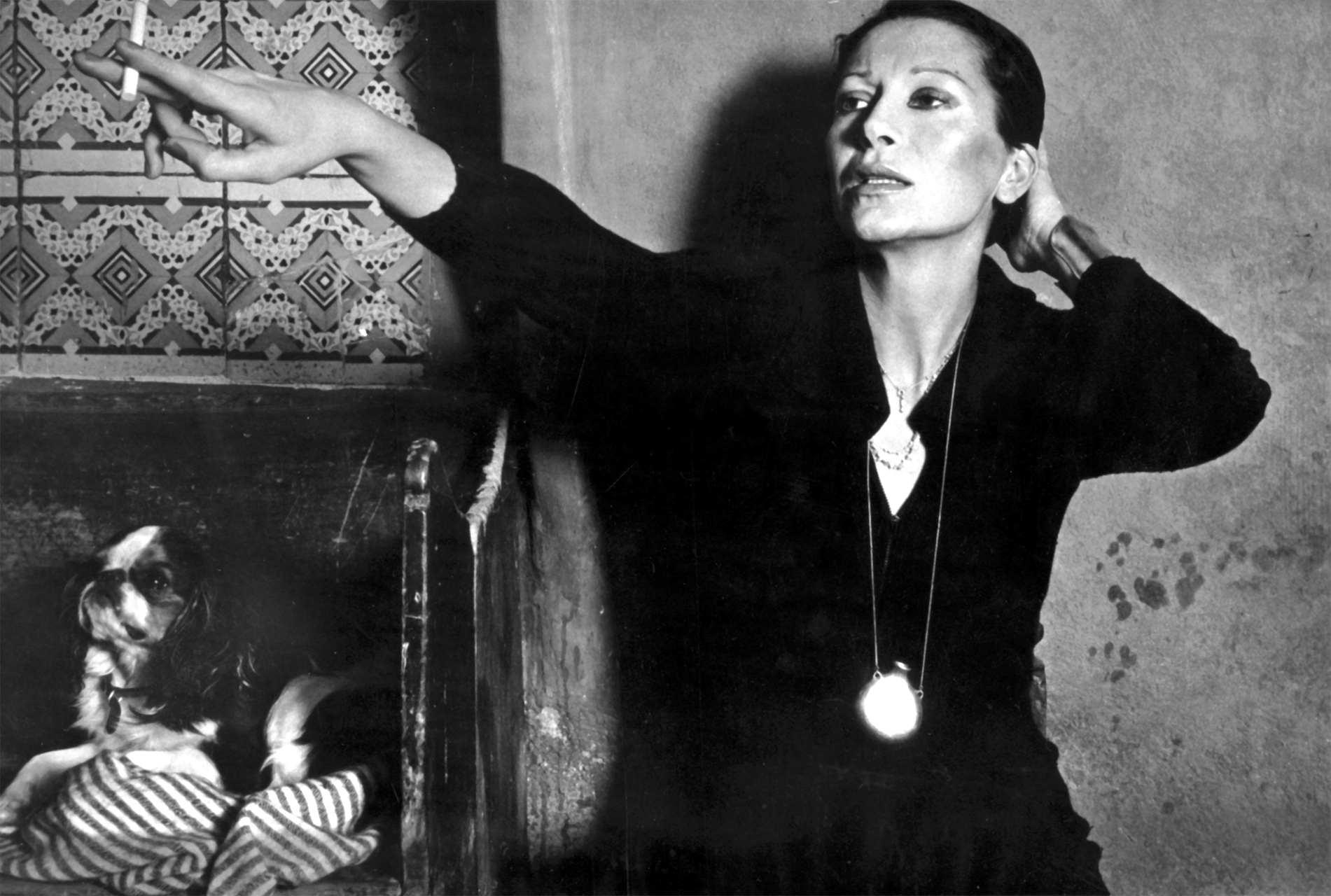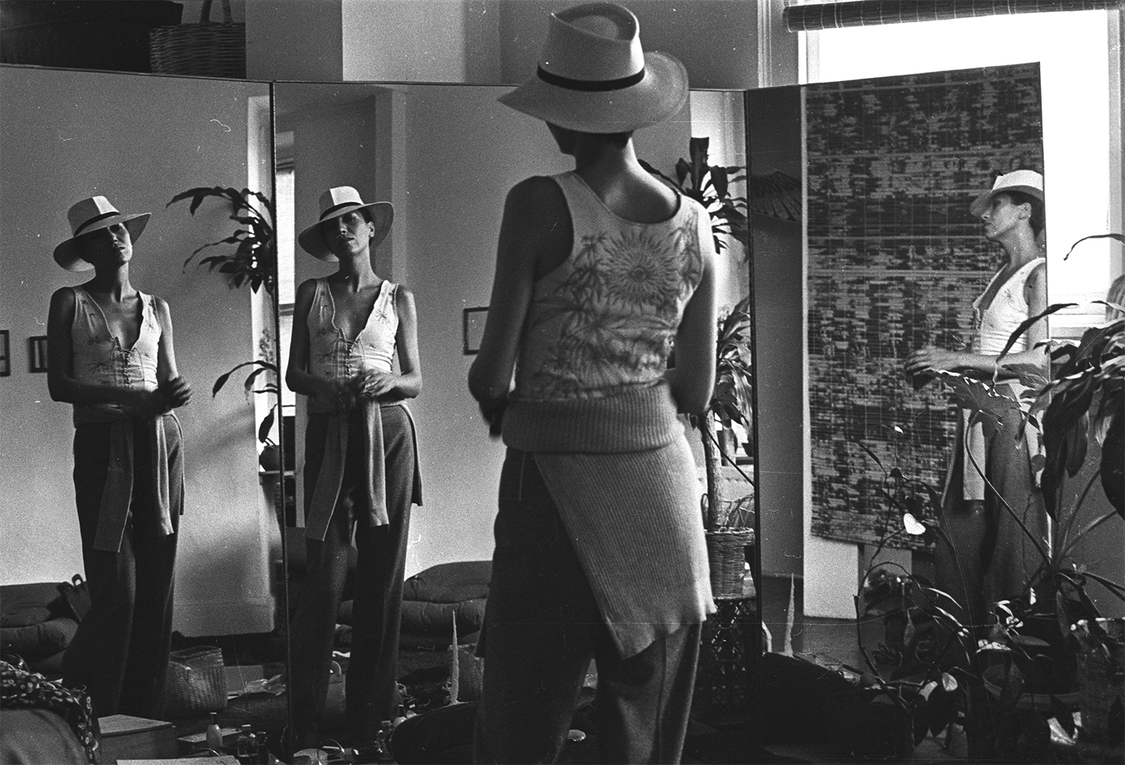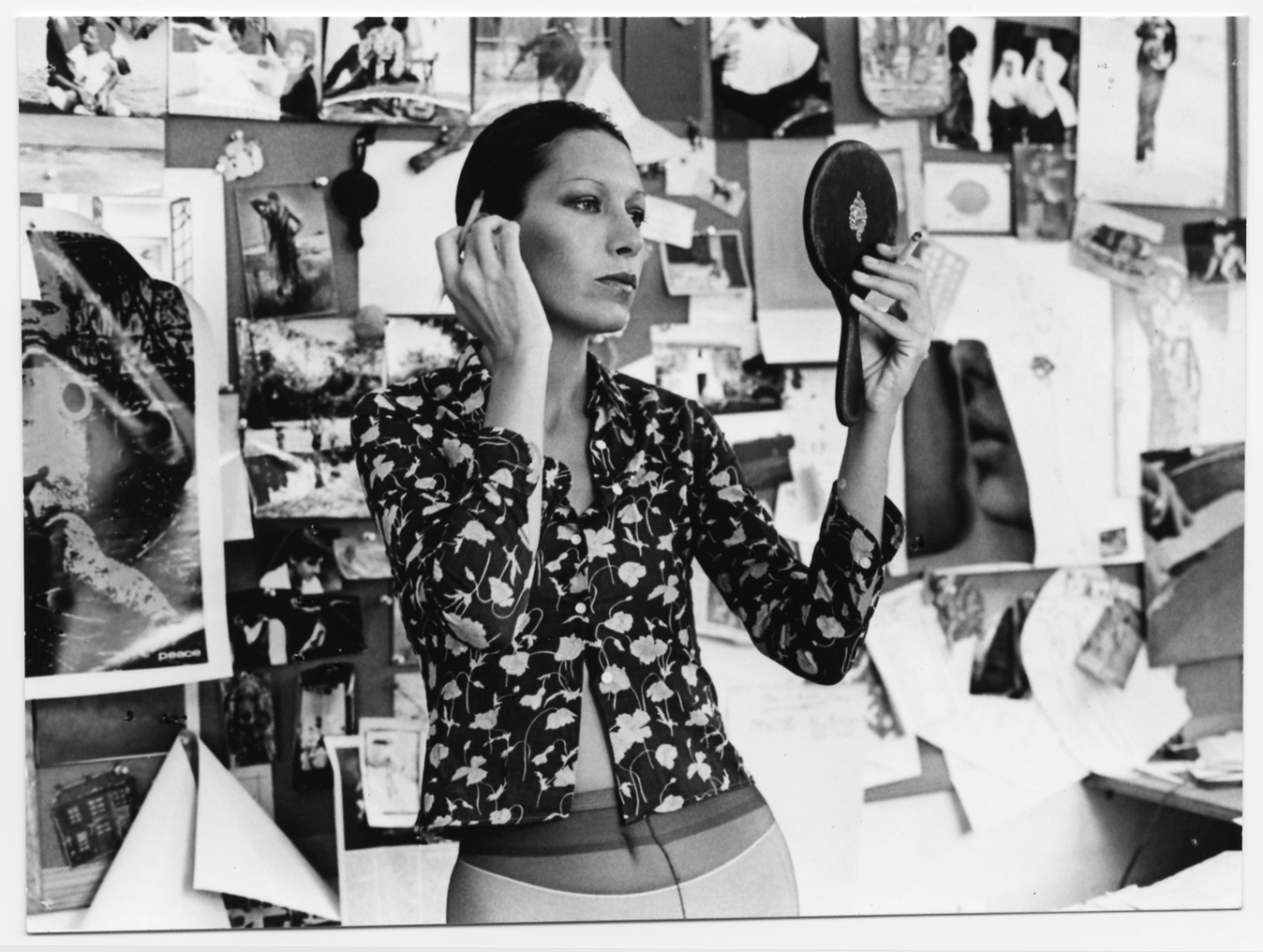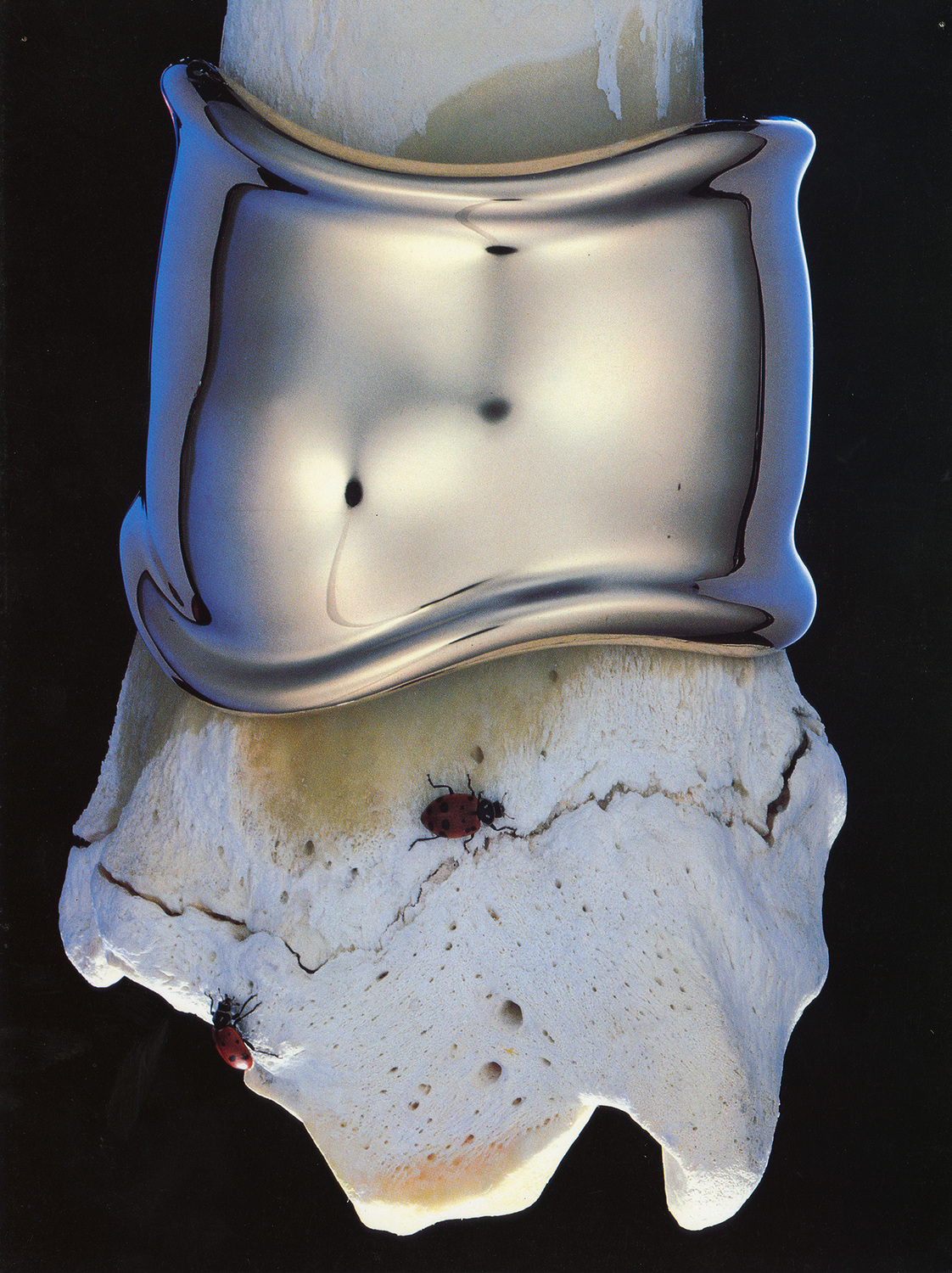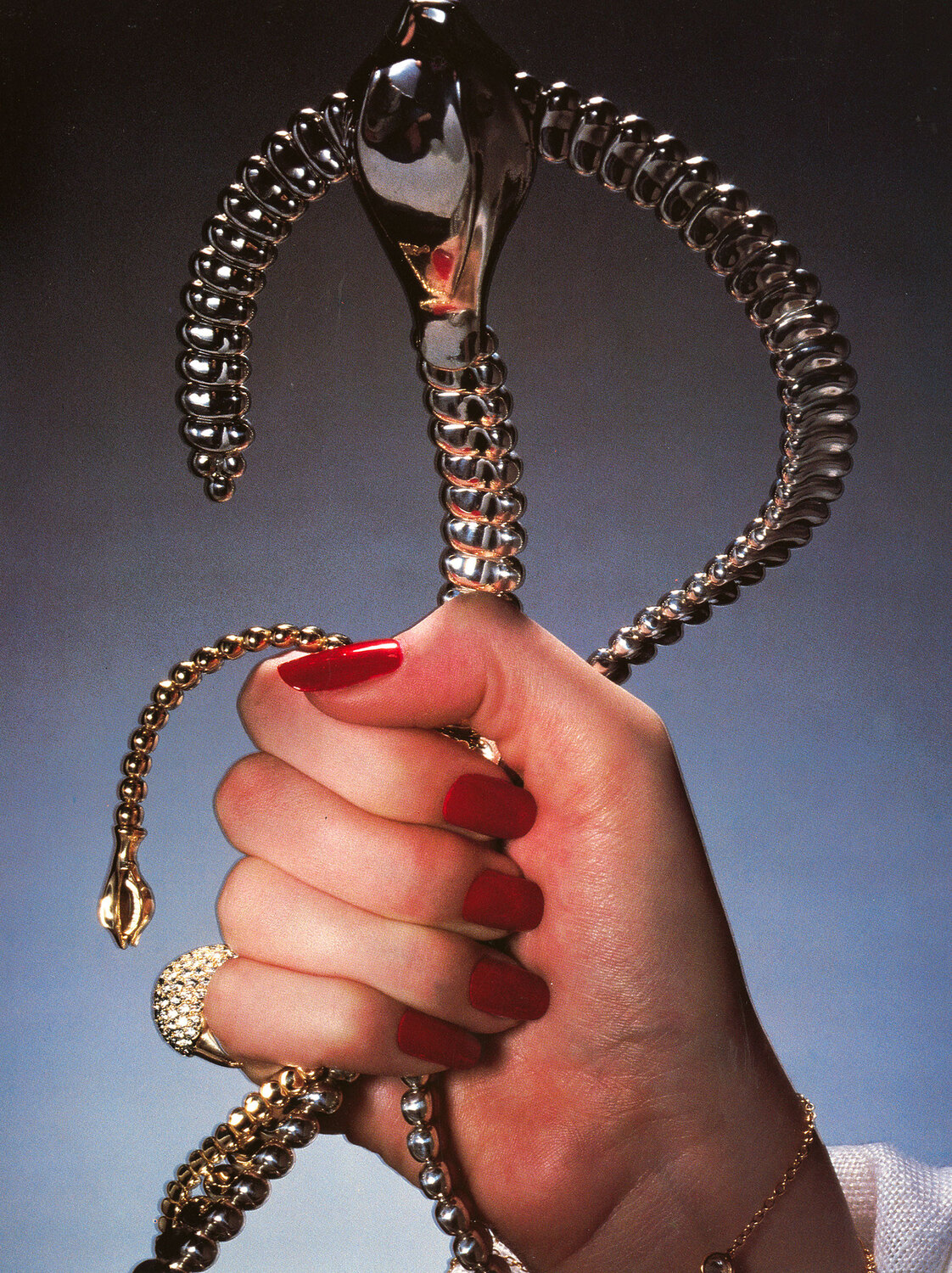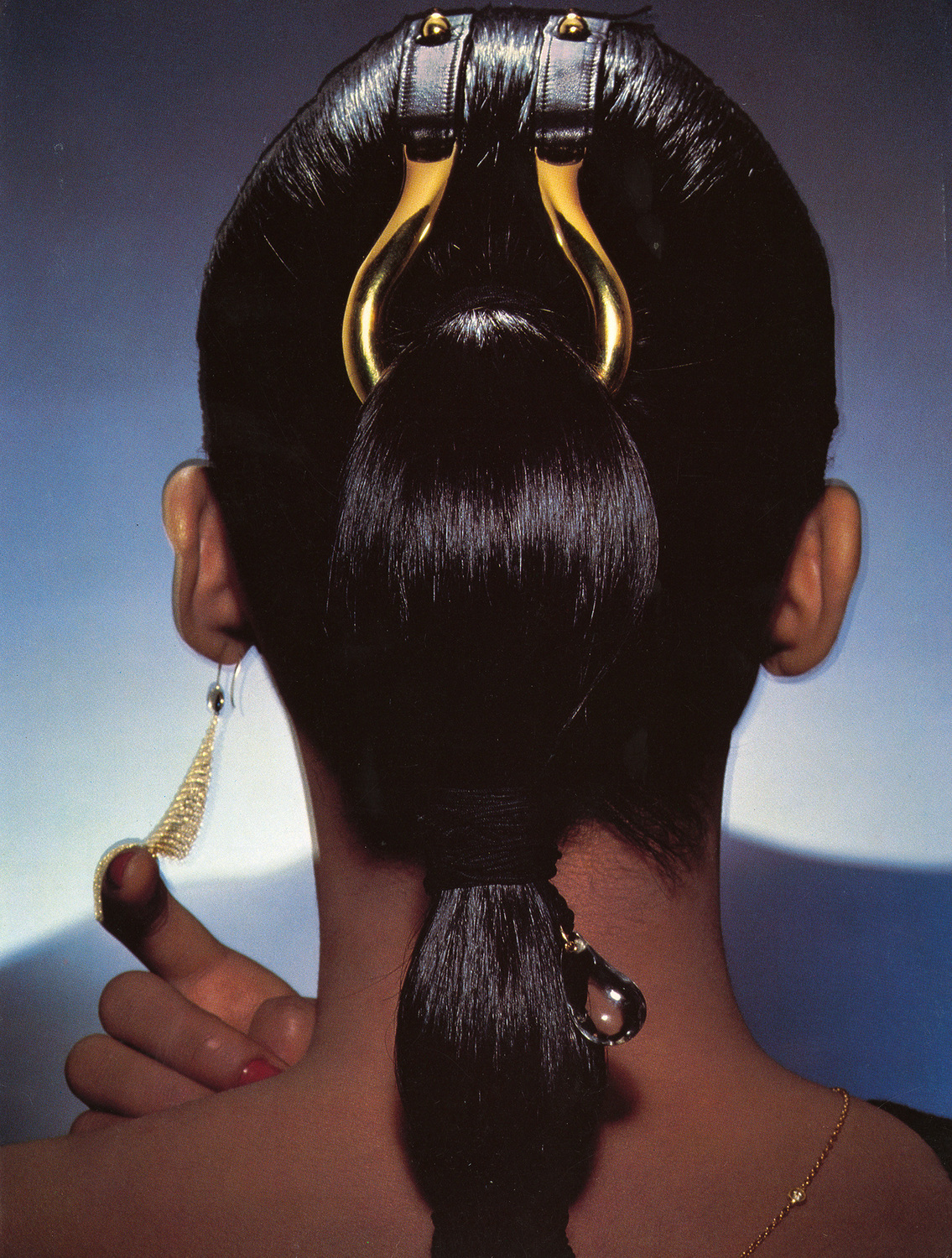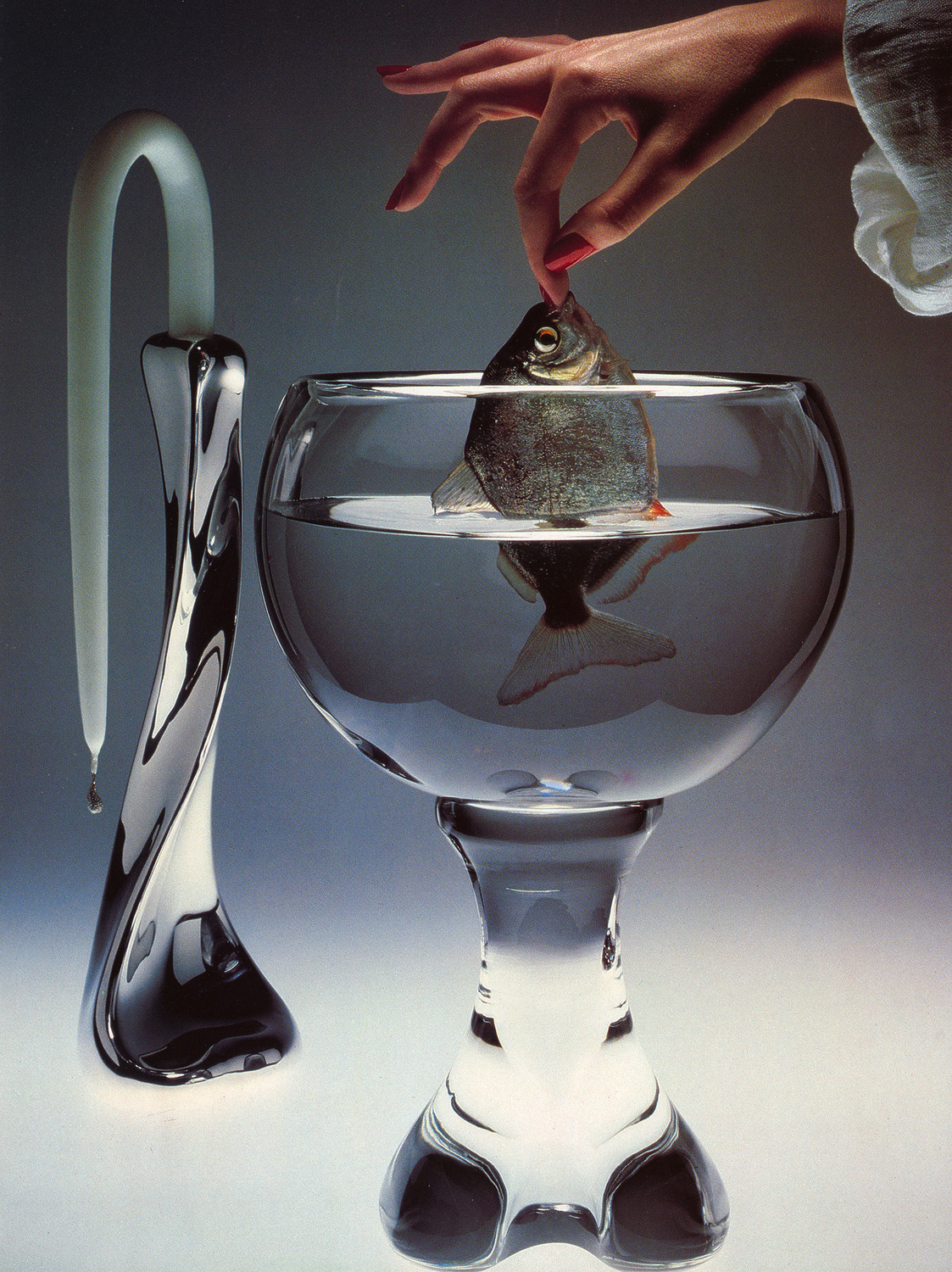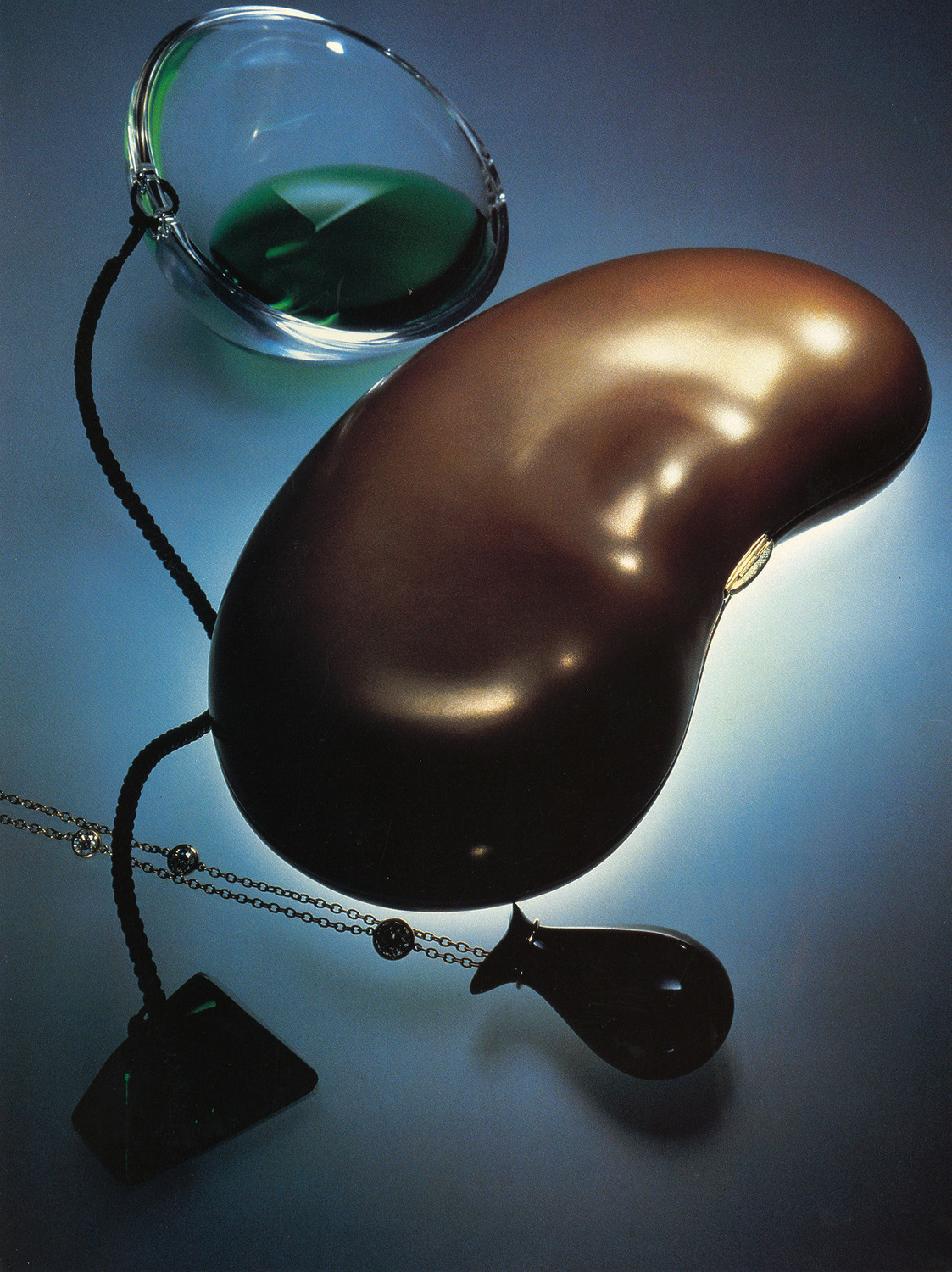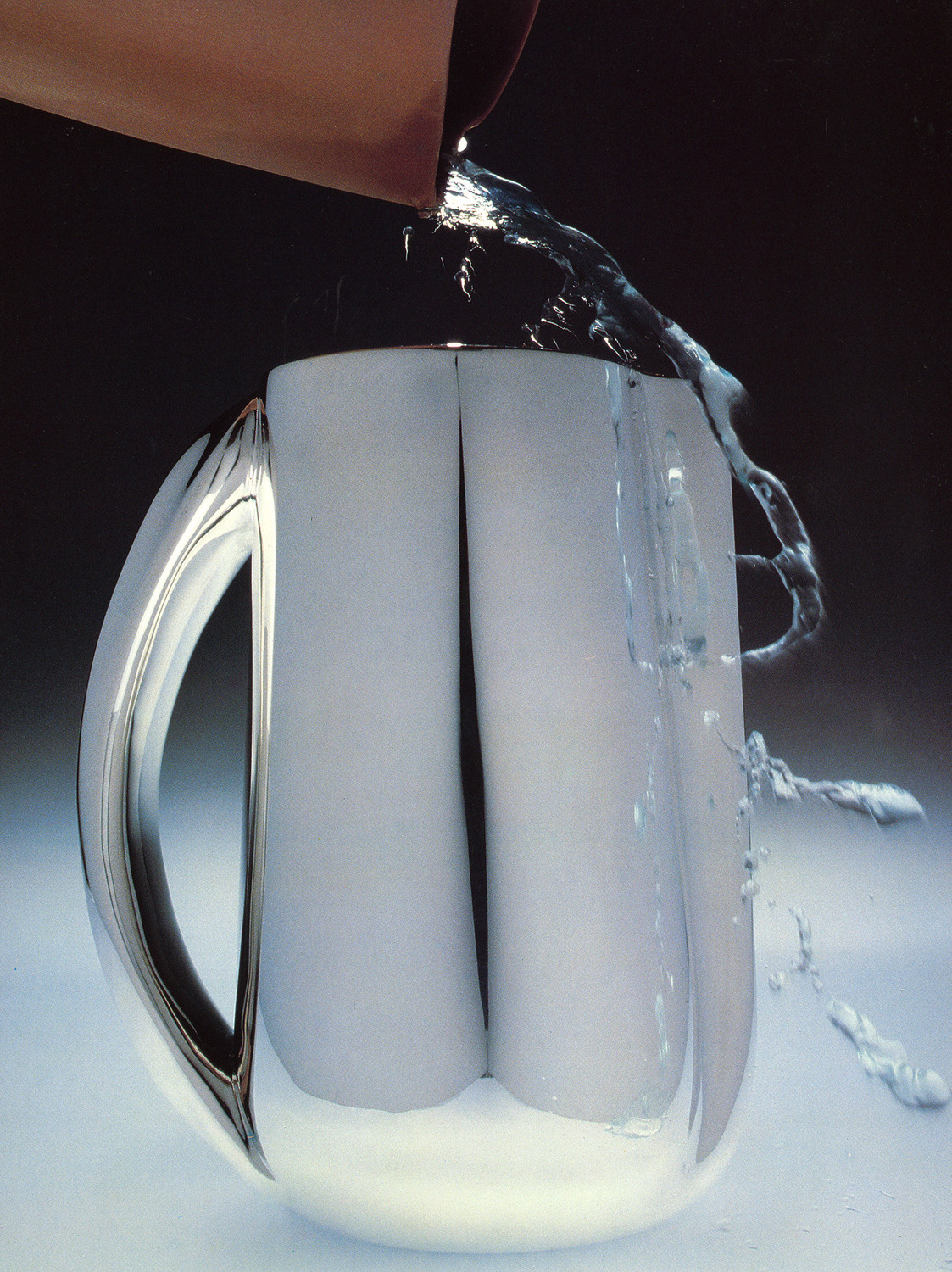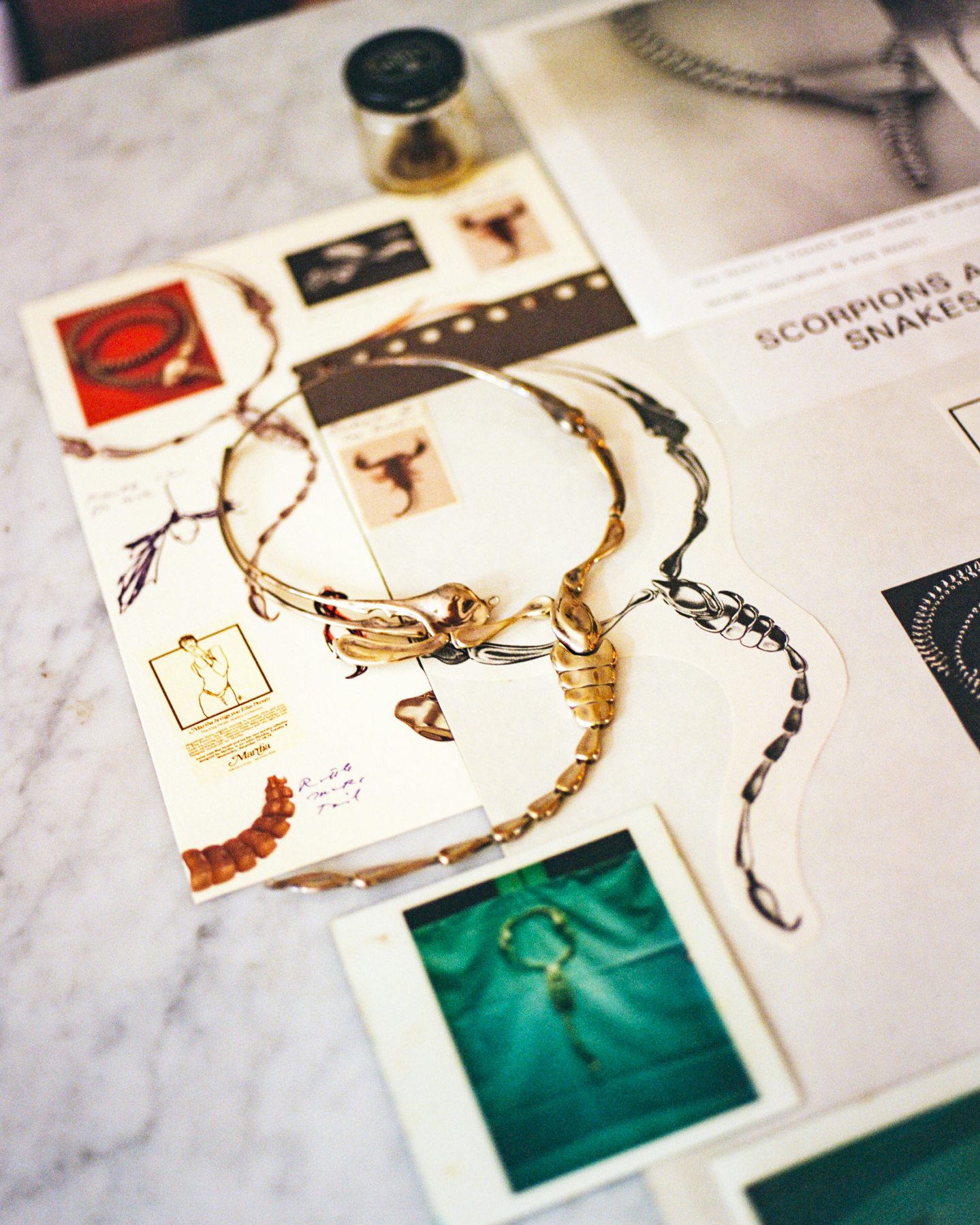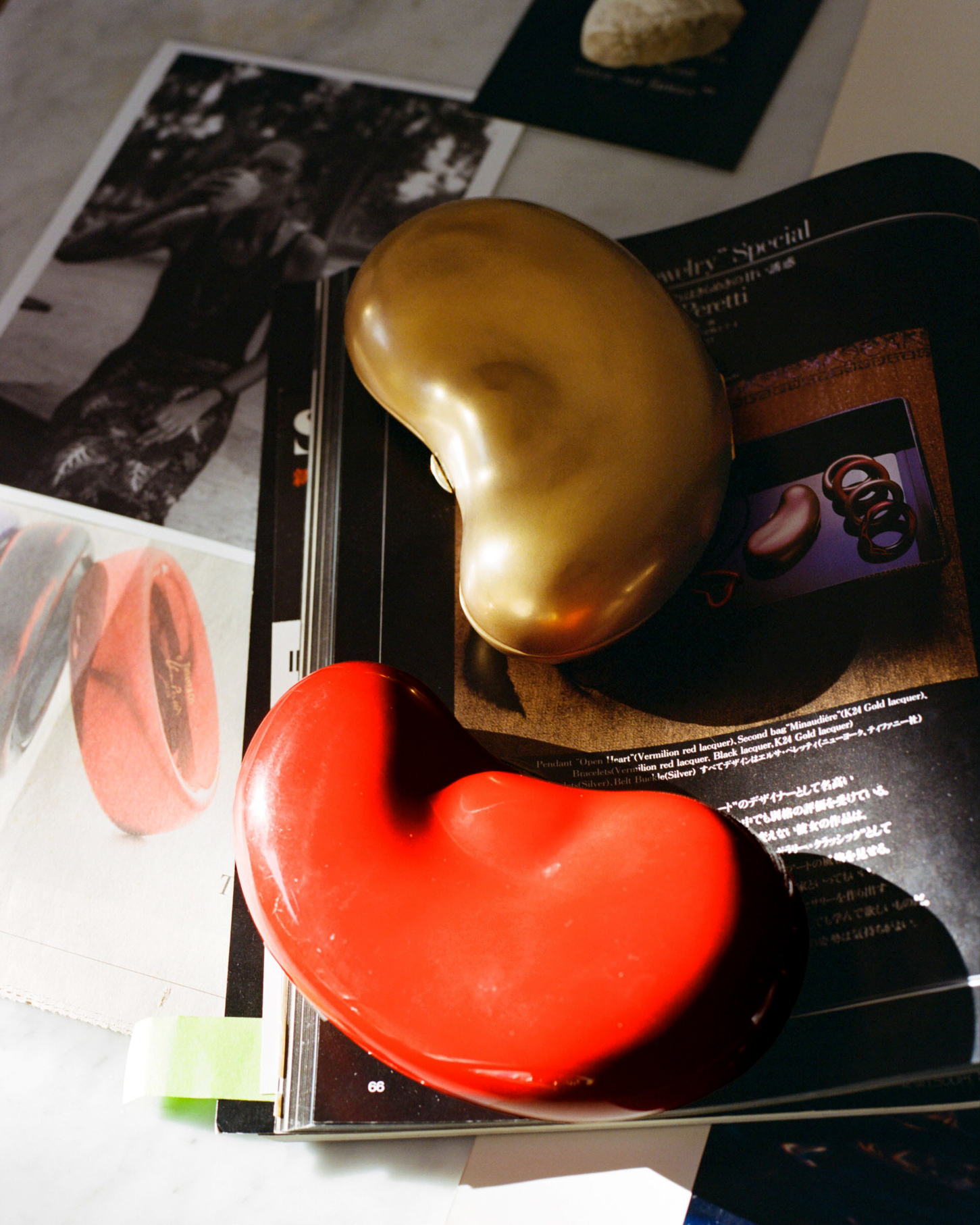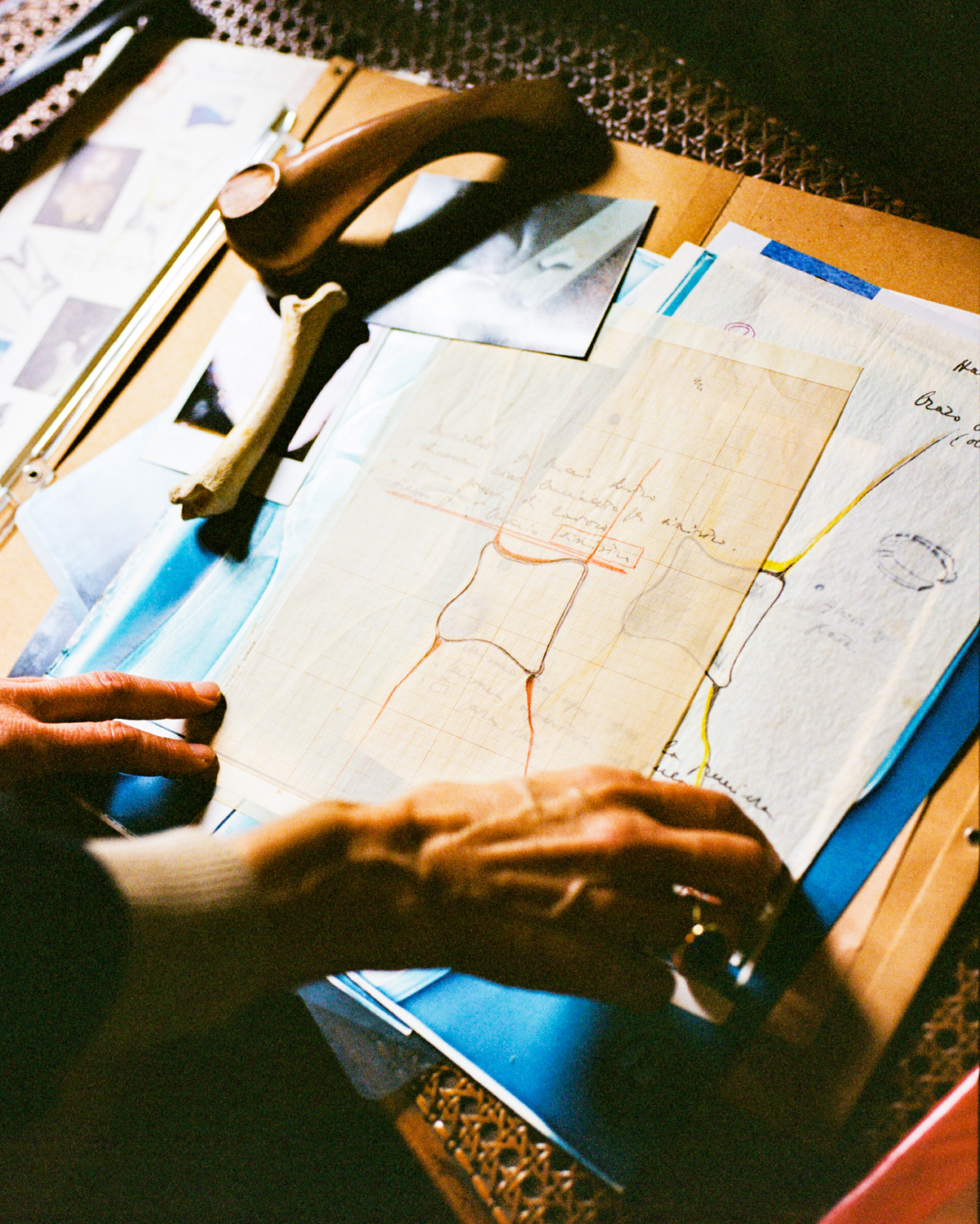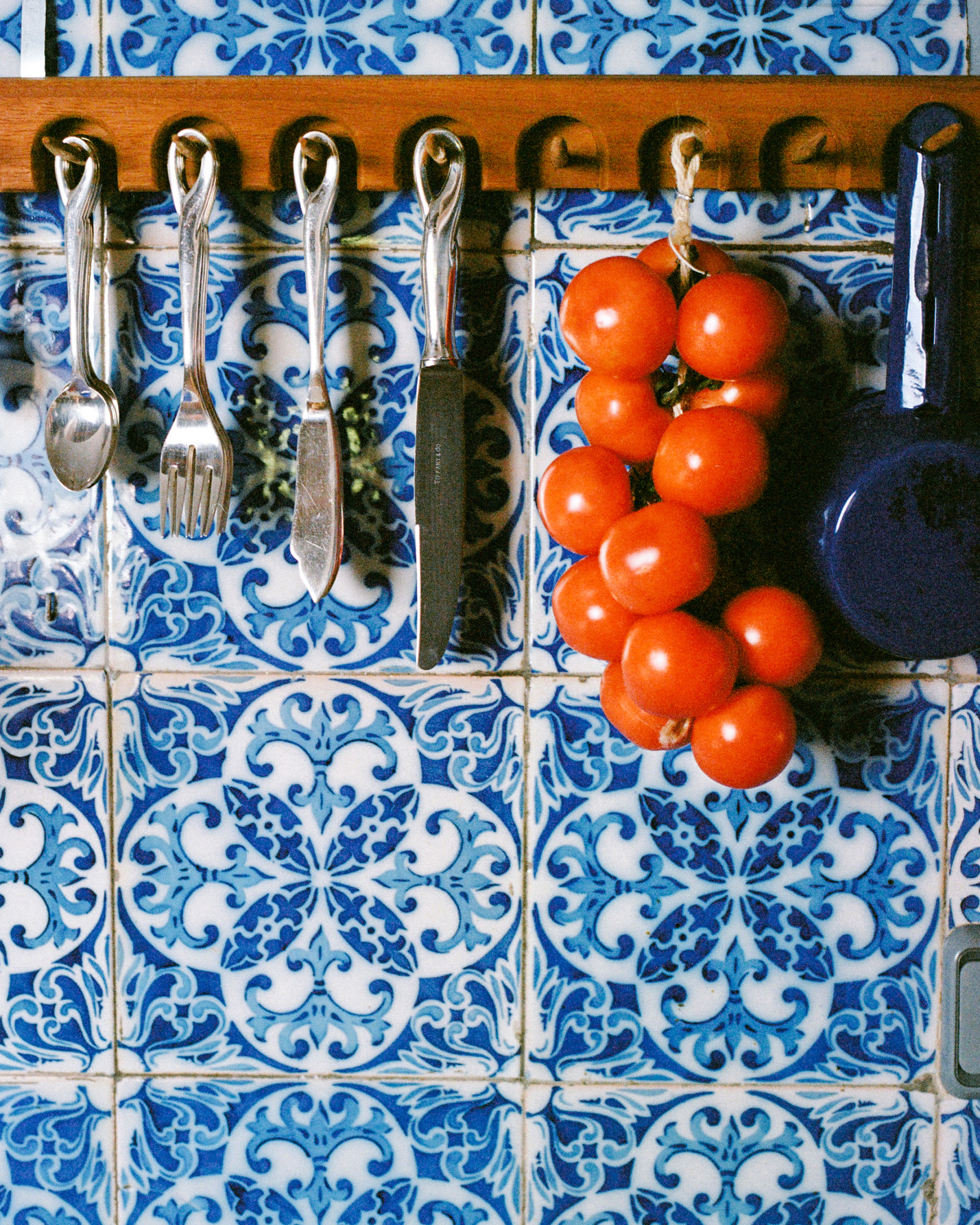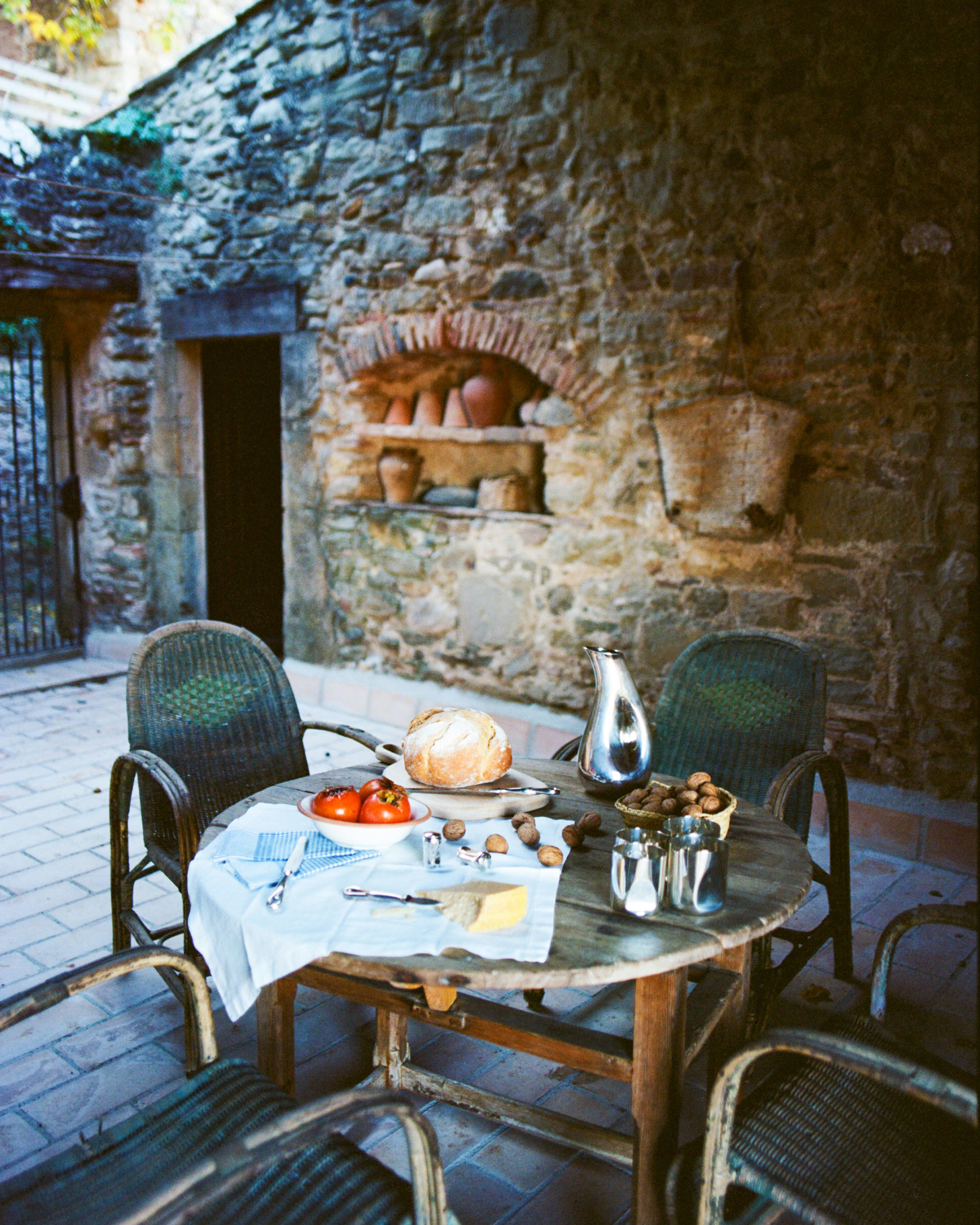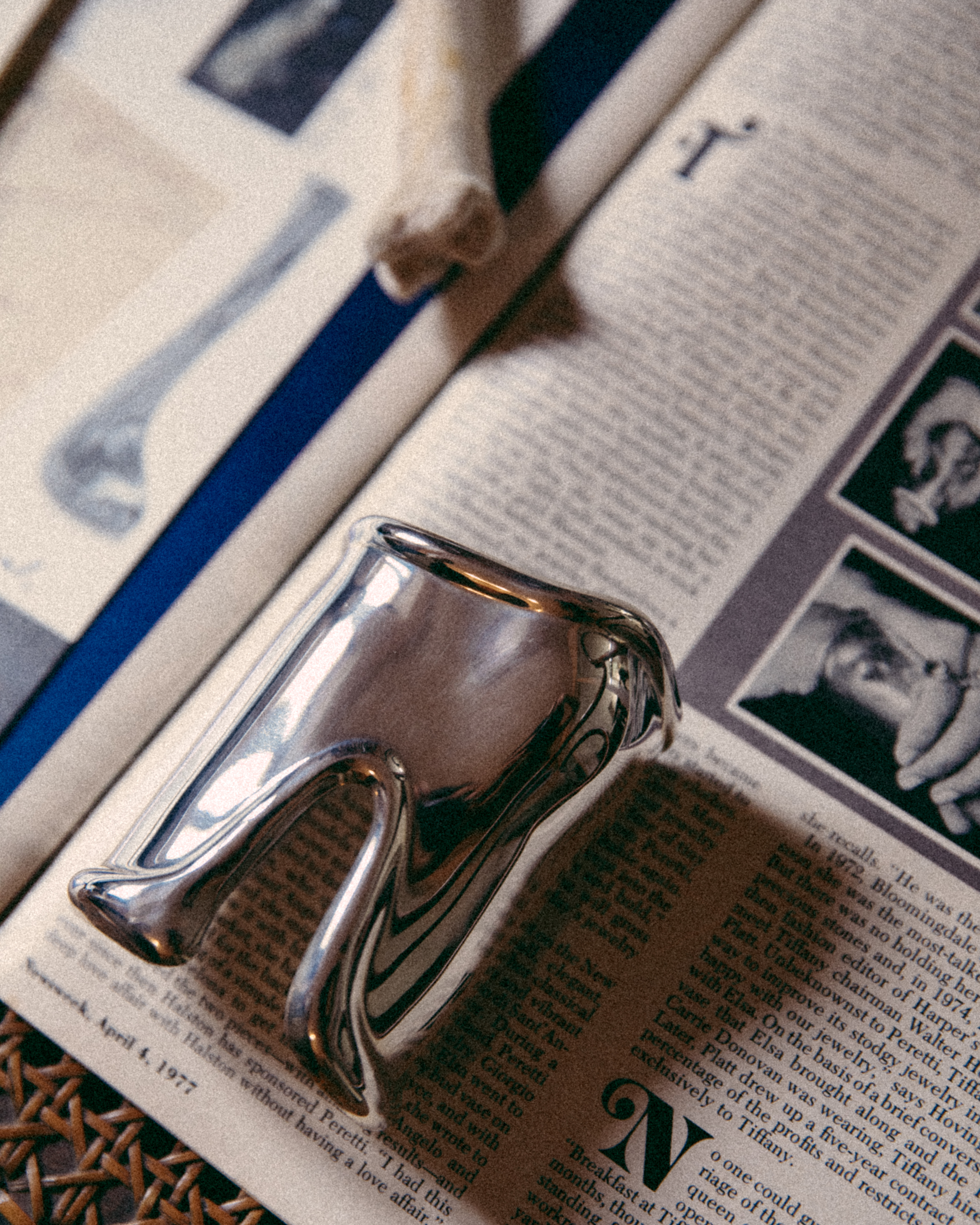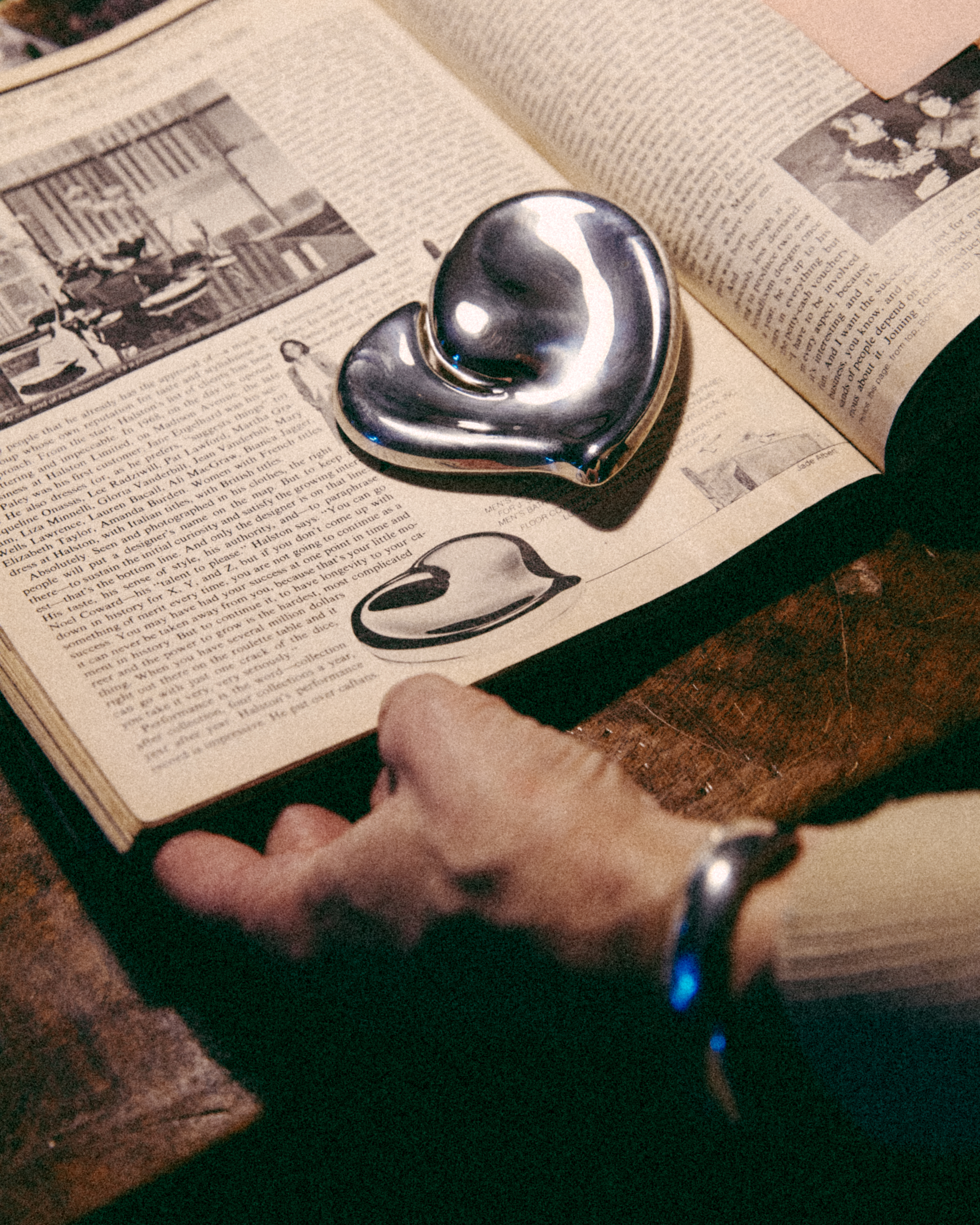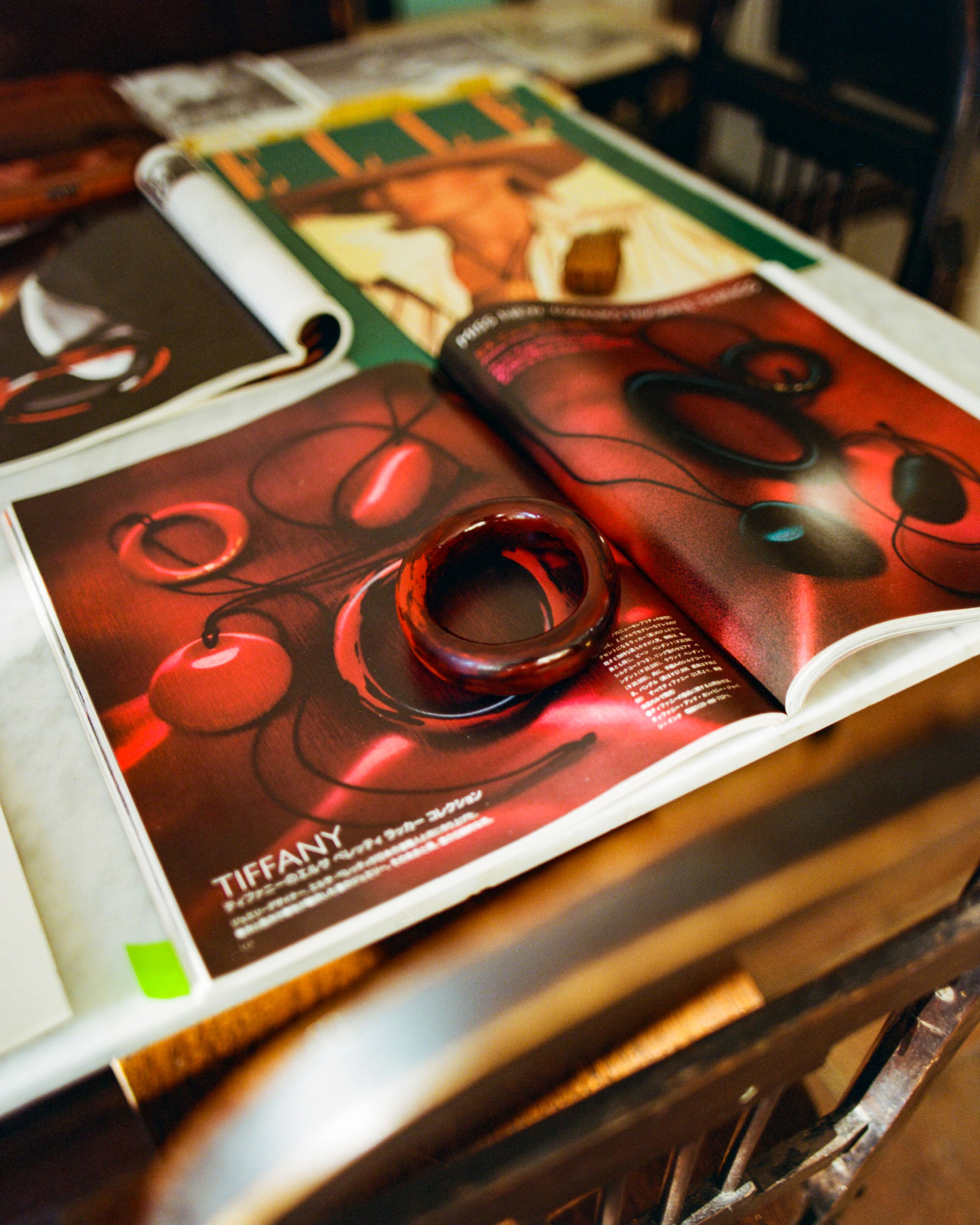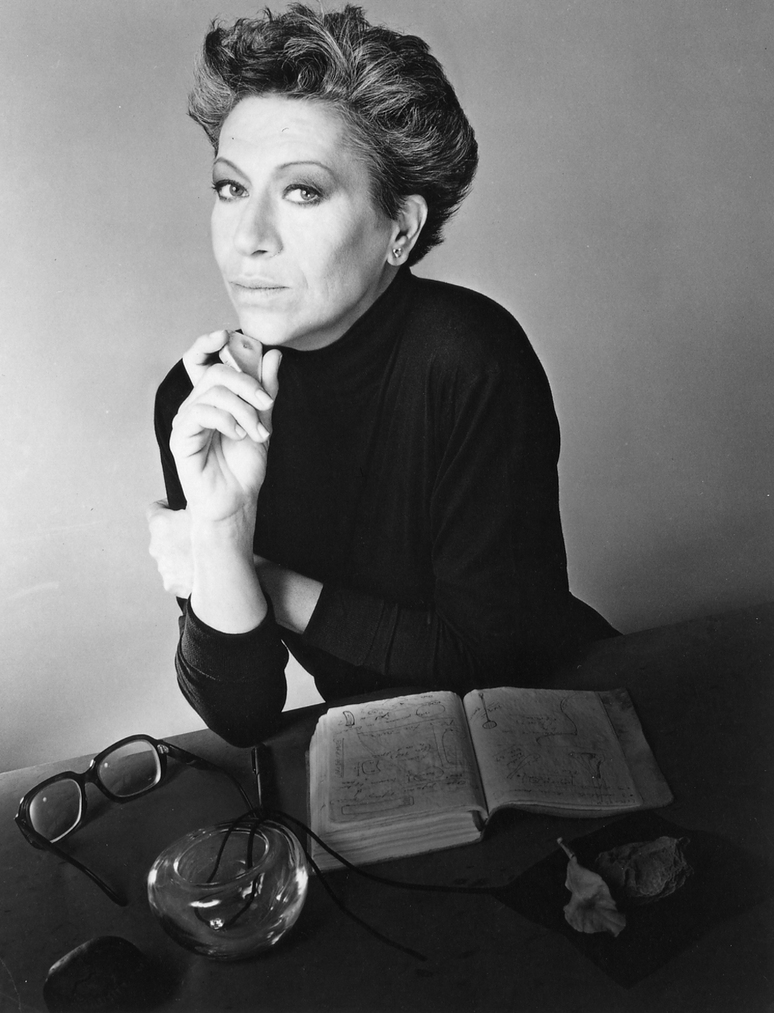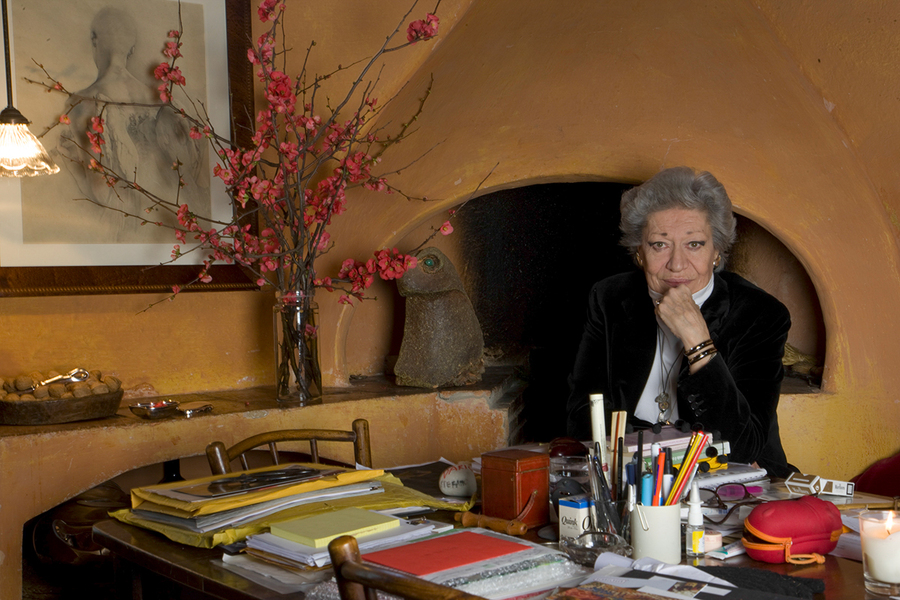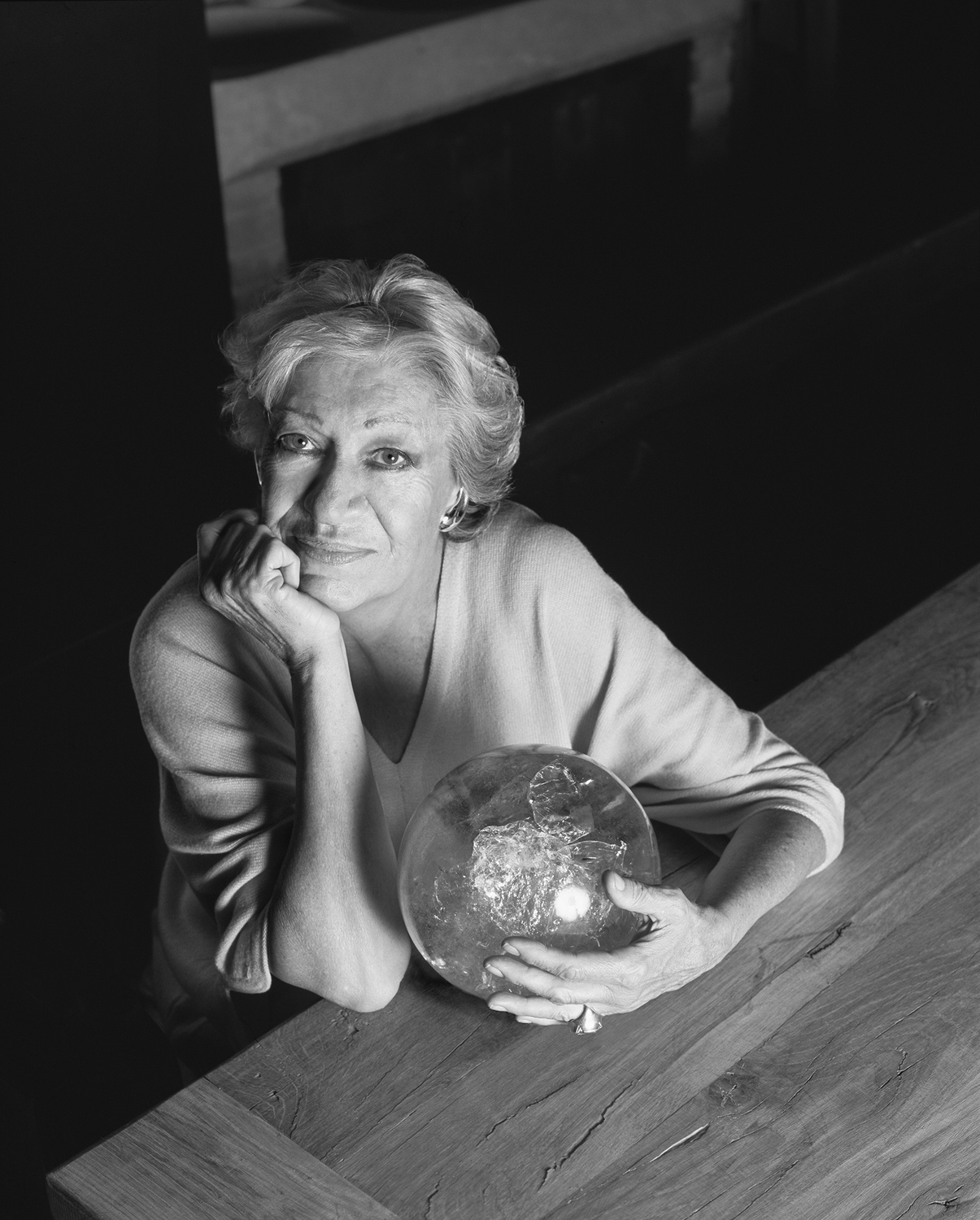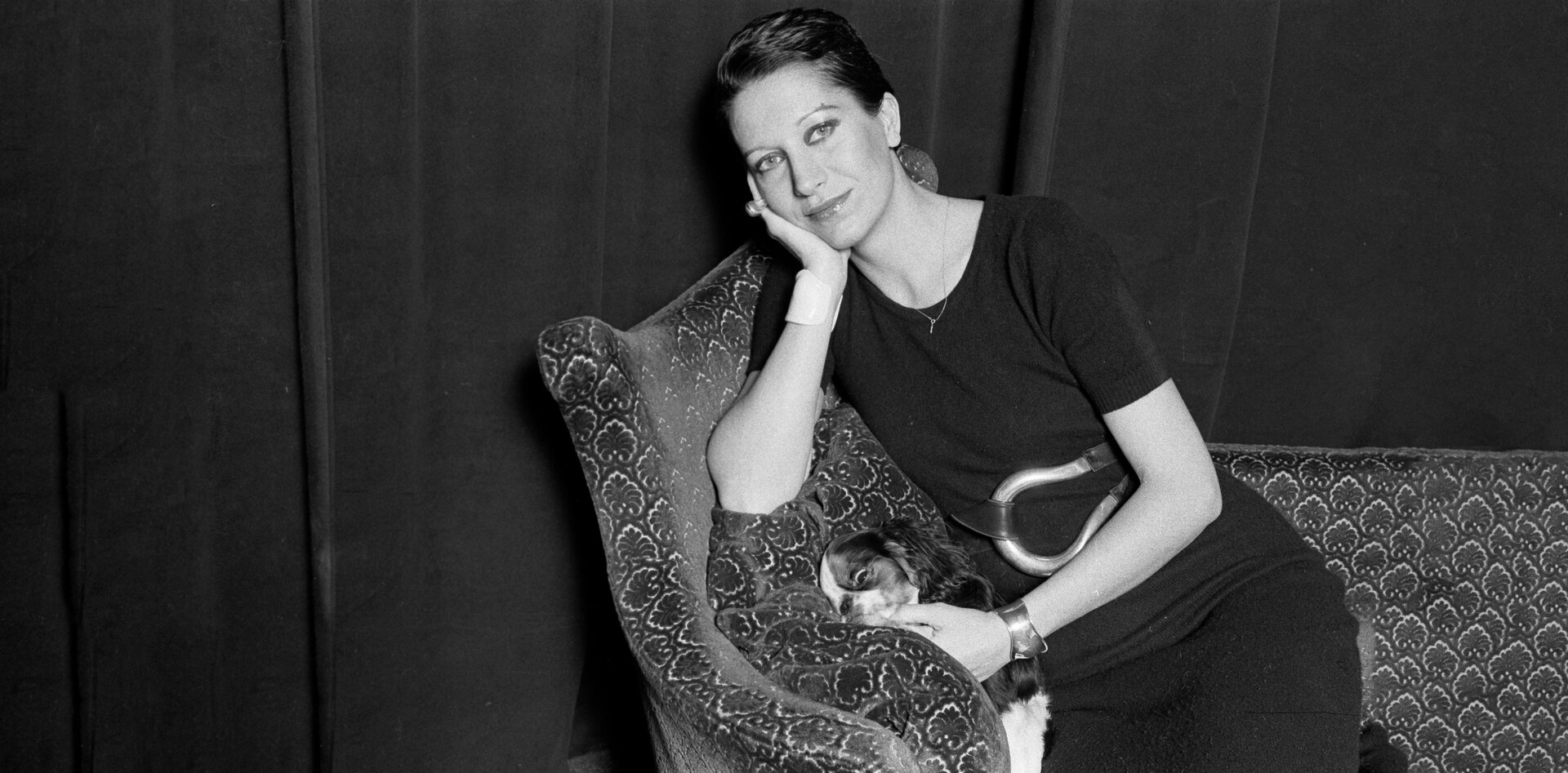 ©All rights reserved Hilda Moray
©All rights reserved Hilda Moray
Elsa Peretti was born in Florence on May 1st, 1940, as the youngest daughter of Ferdinando Peretti and Maria Luisa Pighini. Her father Nando Peretti was a distinguished businessman who developed Anonima Petroli Italiana (A.P.I.) into one of Italy’s leading oil companies. Educated in Rome and Switzerland, she left home at the age of 21 and first made her living as French teacher and skiing instructor in the Swiss mountain village of Rougemont (Gstaad), before moving back to Rome to pursue a degree in interior design. She then moved to Milan in 1963 to work for the architect Dado Torrigiani, and then to Barcelona the following year to pursue a career as a fashion model. During that period, she became a member of the liberal movement of intellectuals and artists known as “Gauche Divine” and modelled for Oriol Maspons, Leopoldo Pomés and Salvador Dalí.
After a few years in Barcelona, Elsa Peretti followed the advice of the modelling agent Wilhelmina and moved to New York in 1968. There, she walked Manhattan’s most prestigious catwalks and soon discovered her true passion - jewellery design. Her first items of jewellery were shown in 1969 alongside the collection of the fashion designer Giorgio di Sant’Angelo. Around this time she also met the American fashion designer and seventies icon, Halston, who went on to become her lifelong friend and with whom she collaborated on many different projects.
In 1968, during a trip to Catalonia, Spain, she fell in love with the mediaeval village of Sant Martí Vell and bought a mustard-yellow house overlooking the village square. Over the years, she restored the house and subsequently acquired and preserved other buildings in the village, including the church. Sant Martí Vell quickly became her safe haven between frequent trips to New York and Asia where she was taking inspiration for her future collections.
Elsa Peretti quickly rose to prominence in the jewellery field. She received the Coty Award in 1971 for her “extension of jewellery into the realm of fashion sculpture” and that same year her work began to be sold at Bloomingdale’s and made its first appearance in Vogue. In February 1974, Halston and fashion editor Carrie Donovan introduced Elsa Peretti to Tiffany & Co., and she soon began working with them on an exclusive collaboration. Tiffany’s first collection by Elsa Peretti was unveiled in September of that same year. 2024 marks the 50th anniversary of Tiffany & Co. and Elsa Peretti’s collaboration, and the moment demonstrates how Peretti’s designs continue to fascinate people many years after they were introduced.
In 1981, Elsa Peretti received the President’s Fellow Award from the Rhode Island School of Design and the Spirit of Achievement Award from the Albert Einstein College in the following year. In 1996, the Council of Fashion Designers of America named her Accessory Designer of the Year. In 1999, on the occasion of the 25th anniversary of the collaboration with Tiffany, the jewellery brand established the Elsa Peretti professorship in Jewelry Design at New York’s Fashion Institute of Technology. At Elsa Peretti’s request, the endowment was dedicated to her long friendship and professional collaboration with Samuel Beizer, the founding chairman of F.I.T. ‘s Jewelry Design Department. In 2001 she was presented with an honorary Doctor of Fine Arts degree from the F.I.T. in 2005, former President of the Italian Republic, Carlo Azeglio Ciampi conferred on Elsa Peretti the Cross of Grand Officer of Merit of the Italian Republic. In 2010, former President of the Italian Republic, Giorgio Napolitano, received Elsa Peretti and awarded the Nando and Elsa Peretti Foundation with the “Credere nella Ricerca” prize for its commitment to supporting medical research in Italy. Throughout her life, Elsa Peretti also contributed to the conservation, dissemination and protection of Catalunya’s cultural and artistic heritage. In 2013 she was the first non-Catalan to be awarded the National Culture Award by the National Council for Culture and the Arts (CoNCA).
Other awards and honours include: the Fashion Group “Night of the Stars” award, 1986; Cultured Pearl Industry award, 1987; Premi Global del JORGC, Col-legi Oficial de Joiers de Catalunya, 2015; Andrea Palladio Lifetime Achievement Award, 2018; Florence Biennale, Elsa Peretti International “Leonardo da Vinci” Lifetime Achievement Award, 2019; Grand Cross pro Merito Melitensi (Order of Malta); Honorary member of the Circolo San Pietro (Holy See).
Elsa Peretti lived the last part of her life in Sant Martí Vell, where she passed away on 18th March 2021 at the age of 80.
ELSA PERETTI, THE DESIGNER
A true pioneer of design, Elsa Peretti often drew inspiration from everyday items and nature. Through her vision, a bean, a bone, or an apple could be transformed into cufflinks, bracelets, vases or lighters; or scorpions and snakes could be turned into necklaces and rings. Elsa Peretti’s subtle abstractions of reality brought a fresh attitude to jewellery and set the stage for a new era in design. Her first collection for Tiffany & Co. in 1974, caused a true sensation in the jewellery world with its “sinuous”, “sensual”, and “sculptural” shapes and forms. Although Elsa’s designs are rendered in a variety of materials, she is best known for her works in sterling silver, which over the past fifty decades has elevated the precious metal to a new height in popularity in jewellery. In a 1974 issue of People magazine, Harry Platt, the great-great-grandson of C.L. Tiffany, then president of Tiffany & Co said: “we were looking for someone who could capture the mood of the young woman as well as the older woman, someone who could make jewellery that women could wear with jeans and sweaters as well as with their ball gowns”. In that same issue of People Elsa Peretti said: “what I want is not to become a status symbol, but to give beauty at a price”. Indeed, by using relatively affordable silver, Elsa Peretti made the world of jewellery accessible to many women.
“The first thing I made in New York in 1969 was a fetish, a little silver bottle,
Elsa Peretti The Atlanta Journal-Constitution, 1999
and it made me famous. I liked the idea of walking around town with a flower
in a bottle around my neck. People stopped me in the street to ask me where
I bought it.”
Elsa Peretti brilliantly expanded the materials and techniques used to create contemporary jewellery. She combined modern craftsmanship with ancient traditions from a variety of different regions and cultures, such as Spain, Italy, Hong Kong, Japan and the U.S. She also established trusting relationships with local artisans, many of whom she worked with for decades. Nowadays, Tiffany & Co. is working with the next generations of artisans chosen by Elsa Peretti to keep her pursuit of beauty and quality alive. Among her acclaimed creations is the revolutionary Diamonds by the YardTM, a combination of fine, fluid chains and bezel-set stones that forever changed the role of diamonds in fashion. Her revolutionary Open Heart, Bone Cuff and Bottle, are a reflection of her own credo that “beauty lies in the simplicity”, and they continue to feel contemporary even after so many years since their creation. In the early 1980s, Elsa Peretti expanded her collections for Tiffany & Co. to include china, crystal and silver designs for the home. Like her jewellery, these new designs were praised for their fluid shape and tactile quality. To this day they are still available at Tiffany & Co. stores worldwide, and continue to represent a love for life, the warmth of a generous host and the idea that beauty and utility should always be as one.
In December 2012, after having worked together for 38 years, Elsa Peretti and Tiffany & Co. extended their partnership for another twenty years, to ensure that her timeless designs remain accessible to all her fans, old and new, to come. In addition, this agreement, together with Elsa Peretti’s last will and testament, has ensured that the Nando and Elsa Peretti Foundation can continue to use the annual royalties for a variety of charitable purposes.
The unique nature of Elsa Peretti’s designs was wonderfully captured by Kate Betts, editor of TIME Style & Design, when she said, “I think Elsa actually designs for herself, which is what makes her jewellery so personal to people. Elsa’s style and personality are all over her work, and that is what women look for in jewellery. They want to relate to and understand who has created this piece.”
In 2009, the British Museum acquired thirty of Elsa Peretti’s creations for its 20th century permanent collection. The British Museum describes Elsa Peretti’s ability to create objects inspired by different parts of the world as unique, noting that they combine superb craftsmanship and symbolic meaning in a modern age.
Elsa Peretti’s designs are present in the permanent collection of the British Museum in London, England; The Metropolitan Museum of Art in New York City, New York; The Museum of Fine Arts in Boston, Massachusetts; and The Museum of Fine Arts in Houston, Texas.
Notable exhibitions include: “Fifteen of My Fifty with Tiffany” at the Fashion Institute of Technology, New York in 1990; The British Museum, display of Peretti-designed jewellery, accessories and tableware from Tiffany & Co. in “Continuity and Change” 2009; and rooms dedicated to Elsa Peretti at La Fortalesa de Sant Julià de Ramis, 2019.
ELSA PERETTI, THE PHILANTHROPIST
Elsa Peretti was involved in philanthropy from a young age. Inspired by her father’s generosity, she often aided those who were most in need, supported scholarships in cultural and creative fields and defended human rights. Over time, Elsa Peretti developed an active concern for the future of our planet, which led her to establish what she considered the most ambitious achievement of her life. In 2000, she put together a staff of motivated people to form the Nando Peretti Foundation, a charitable foundation in honour of her father that was renamed the Nando and Elsa Peretti Foundation (NaEPF) in 2015.
Elsa Peretti aimed to change the world and improve the living conditions of the most deprived. Since its creation, the Foundation has tackled two major challenges: the preservation of the environment and the empowerment of children and women through education and healthcare. The Foundation, which is based on a broad statute, has been engaged in numerous projects both globally and locally and has responded quickly to humanitarian emergencies to realise the founder’s purpose over the years. In addition and in accordance with Elsa Peretti’s ecological vision and the interdependence between human and nature, a special attention was paid to environmental conservation and to protection of endangered species. Promoting sustainable development, encouraging coexistence with the land and the fight against inequality. As a philanthropist, Elsa Peretti worked for radical and systemic change in the world, aiming to build a common future based on respecting nature. In her words: “to care for and protect our planet is not a choice-it is a necessity for all humanity. We are already behind schedule, we must act now and everyone, citizens, politicians, entrepreneurs. The climate change and habitat destruction are increasingly endangering the survival of thousands of animal and plant species globally. The balance of the overall Earth depends on their well-being and on our ability to take responsible action.” Gazzetta di Parma, September 2020.
The NaEPF, during Elsa Peretti’s presidency, supported a wide range of projects for the promotion of human and civil rights, with a special emphasis on the right to education, children’s rights, and women’s rights and dignity. It also supported medical and scientific research projects to promote physical and mental health in partnerships with some of the most important international as well as Italian universities and research institutes. For the same purposes, the NaEPF also supported specific interventions including the building of hospitals, schools, educational centres and other facilities in advanced as well as poor countries. Promotion of culture and the arts is another pillar of the Foundation, from individual scholarships granted to talented artists, to the funding of public exhibitions and concerts, and to the recovery and restoration of ancient artistic works.
The July 2017 famine in South Sudan, caused by the nation’s four-year conflict, left Elsa Peretti deeply saddened. In response, the NaEPF committed EUR 2 million to support a humanitarian response plan for South Sudan. Eight organisations worked to mitigate the crisis by providing food and nutrition to those who needed it, protecting refugees and displaced people from violence and providing more than 55,000 children access to education. This was the NaEPF’s biggest single investment ever in a humanitarian emergency, and it evidenced a dedicated commitment to alleviating massive suffering during one of the fastest growing refugee crises in the world.
In twenty-five years, the Nando and Elsa Peretti Foundation has awarded grants to more than 1.200 non-profit projects in 83 countries across the world, for an overall value of over EUR 80 million.
“I wanted a foundation with a very broad statute. Every year we welcome and evaluate educational, cultural and artistic, medical research, environmental conservation and human rights projects. I wanted to keep a window open to the world, a very large one, to understand what is happening and how to do my part. As a founder, I have always participated directly in the choices and activities. I feel it as a responsibility. I think it is my duty to evaluate together with the board members and my team what projects to support.”
Elsa Peretti Gazzetta di Parma, September 2020
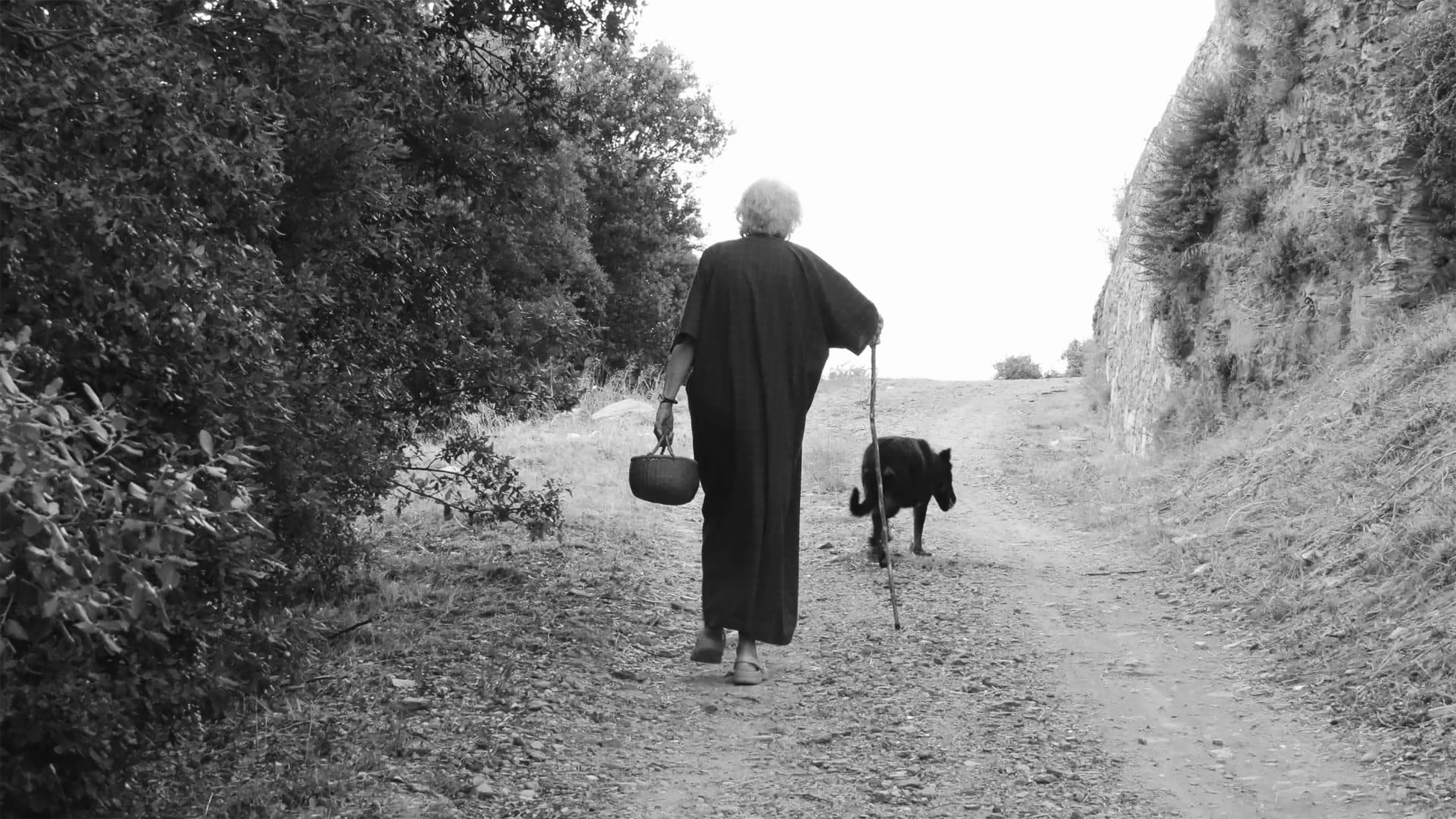 ©All rights reserved Toni Cañestro
©All rights reserved Toni Cañestro
“For me to be a good designer is the simplest thing in the world. But to be a good human being, that is going to be hard. I’d like to try though.”
Elsa Peretti Vogue
